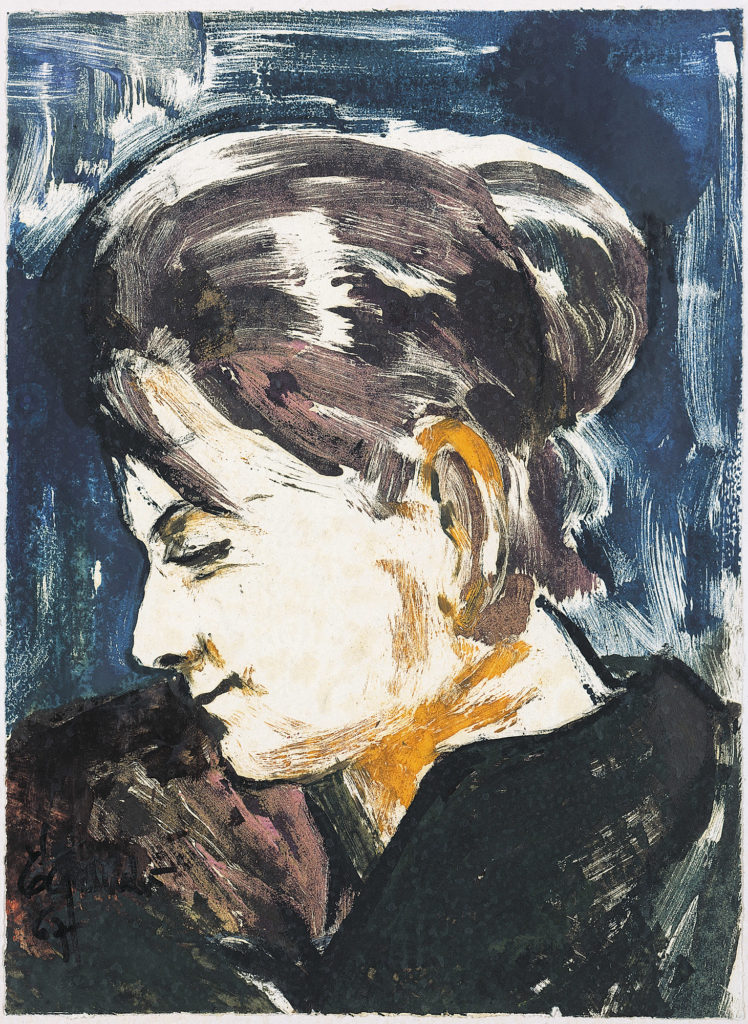It was a professor at the Reformed College Pál Sárvári who established the tradition of drawing in Debrecen. Today painters interpret and transform that tradition rather variously. In the last four decades a good number of artist, János Mata, Kálmán Gáborjáni Szabó, Endre Vadász, Ferenc Medgyessy, László Holló, József Menyhárt, János Józsa and several others with Imre Égerházi among them presented the connoisseurs of the genre with beautiful pen-and-ink sketches, felt-and tin-drawings and monotypes. They did not regard drawing as mere fingerwork, since it was a mode of self-expression for them, their works were either preliminary studies to further paintings, copperplates, woodcuts, lino-cuts, enamels and statues or self-standing works reflecting artistic moods and ideas.
Looking back to his childhood Égerházi avers: „I took up drawing at the age of six. My first instruments of drawing, six fat-chalks were presented to me by the Swiss Red Cross. When I ran out of them I continued to draw with slate-pencils, pieces of wet brick, lead or coal, ink, waterproof ink and a brush.” In the last fourty years he made a number of engravings and drawings, and now he has a rich collection of them. Fourty pieces were published at the Alföldi printing-press in 1989. He also illustrated two volumes of poetry. Some of his drawings and etchings appeared in the Hajdú-Bihari Napló (a daily newspaper in Debrecen), in a local periodical Alföld and in several other Hungarian literary reviews.
Égerházi makes use a number of artistic techniques in creating his world, which is marvellously represented in this album. His versatility is a result of his method of „taking notes” at home, abroad or even at a boring conference, in situations where he cannot use his insrtuments and can only make sketches.
He represents all kind of people and environments in his drawings, portraits, nudes, faces from the Hajdúság, Transylvanian men and women with their joys and troubles from the past or the present and their hopes of a better future. Representing his world realistically, Égerházi displays its versatiliy in one single line. He does not intend to reduce the function of drawing to a mere documentation of life, he wants to elevate the soul high above the monotony of everyday reality that renders life a bit more meaningful and harmonious. The harmony of his forms together with the well-composed imagery of his Transylvanian landscapes conjure up a world of clarity and freshness that successfully conveys the pleasant atmosphere of the rural landscape even for those who are ignorant of its beauty.
Égerházi draws very expressively. He represents only most significant details of his models and preserves the palsticity of natural forms. His formal purity and sense of well-balanced structure suggest tranqulity. Even his small drawings reflect a strong feeling for monumentality. With the help of his energetic tracing he resuscitates faces, natural objects and the landscape and he carefully balances his system of lines that are presented as clear, purposeful and well-ordered in his monotypes. He uses moderate forms and renounces the intention of transcending visual reality, thus he preserves the individuality of his models and their neighbourhood. Égerházi’s method of structuring reflects his own specific conception of emotional values.
His moderate technique conjures up memories of Jugendstil. Cubism too, attracts his strong personality, so he not only represents landscapes, characters and situations, but also displays ideas behind them. He creates his own world of drawing by which he wants to improve his environment aesthetically by working for the future.
Imolay Lenkey István
Égerházi Imre grafikái 1992.


